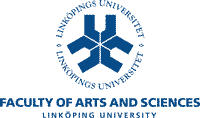
|
Visa svensk kursplan |
|
COURSE CATEGORY Single Subject Course MAIN FIELD OF STUDY Övriga ämnen - ÖÄA SUBJECT AREA |
COURSE CODE | HEKA05 |
In the first sub-course, theories and methods in economic history are introduced, with the focus on social and economic transformation in the Third World from colonial times until today. Economic development is analyzed in the light of the variety of historical experiences, institutional traditions and cultural patterns throughout the Third World. Development strategies, past and present, and their applicability in different institutional settings are discussed, as well as the concepts of growth, development and progress.
Economic Development and Demographic Change
The second sub-course explores the interplay between population and the economy. The relationship between resources and population growth is explored, as well as the challenge of changing demographic structures. Population and labor force trends are analyzed from the perspectives of age and gender structures, income distribution, education, health and migration.
International Business and National Economies
The third sub-course explores the emergence and development of international business and the interplay with governments and local entrepreneurship. Experiences from different Third World countries regarding international trade, foreign investment and natural resources are discussed, as well as the consequences of market integration and disintegration.
Students failing an exam covering either the entire course or part of the course two times are entitled to have a new examiner appointed for the reexamination.
Students who have passed an examination may not retake it in order to improve their grades.
Only general admission requirements: Completion of an upper secondary education and skills in English, both written and oral, corresponding to the level of English required in Swedish upper secondary education (eg. a TEOFL-score of at least 500 points for paper based test, 197 points for computer based test or 61 points for internet based test; IELTS with at least 5,0 overall and no part under 4,5, or equivalent)
The course is carried out in such a way that both men´s and women´s experience and knowledge is made visible and developed.
|
||||||||||||||||||||||||||||||||||||||||||||||||||||||||||||||||||||||||||||||